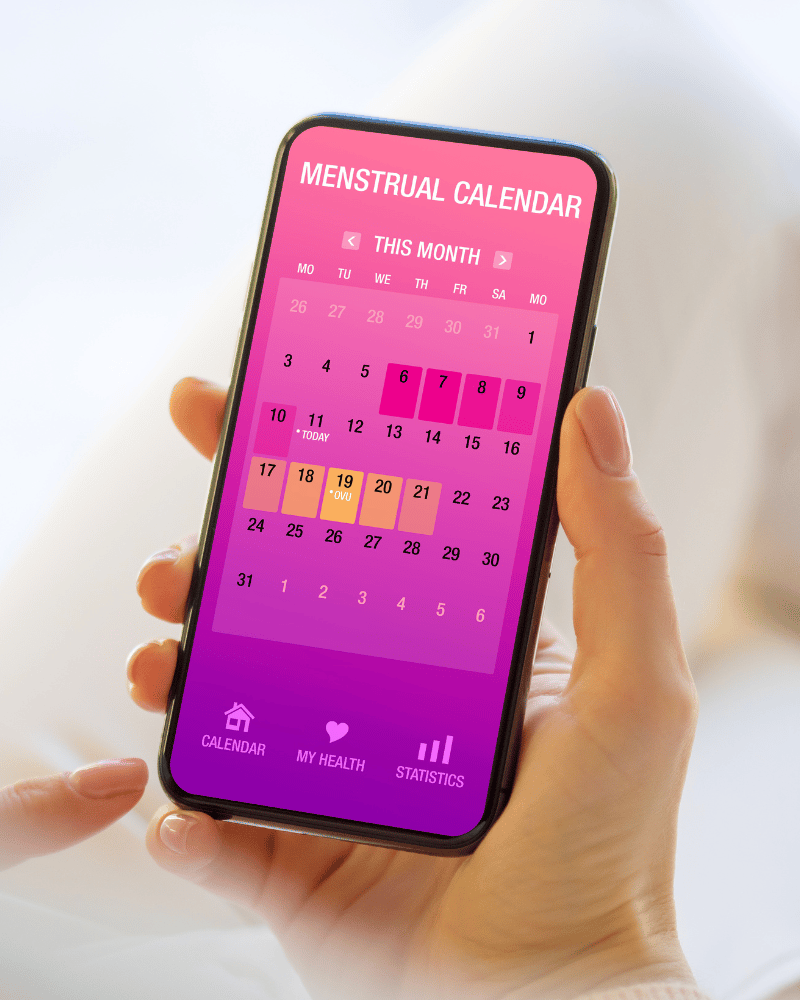What are Pregnancy Flutters at 4 weeks?
There are many reasons why a woman may suspect a pregnancy. One could be having pregnancy flutters at 4 weeks. At this early stage, it’s important to check for pregnancy. Don’t worry; we’re here to tell you about pregnancy flutters at 4 weeks.
This article includes:
- Confirming your pregnancy at 4 weeks
- 4 weeks pregnant symptoms
- What are pregnancy flutters at 4 weeks?
- Can you feel pregnancy flutters at 4 weeks?
- Where is the baby located at 4 weeks?
- 4 weeks pregnant belly bloated
- Ultrasound scan at 4 weeks pregnant
- 4 weeks pregnant symptoms discharge
- Healthy pregnancy advice
Confirming your pregnancy at 4 weeks
You can use a home pregnancy test to confirm that you are pregnant. This is the most accurate method, as a pregnancy test can measure your hCG levels at 4 weeks pregnant. A high enough hCG level will give you a positive pregnancy test result.
Get in touch with your doctor if you receive a positive pregnancy test result. The doctor can get you registered for your prenatal appointments. If your result is negative, you could wait a few days before doing another test.
Congratulations, at 4 weeks pregnant, you’re at the beginning of your pregnancy journey! You might be thinking about the pregnancy symptoms you might have. Pregnancy is different for everyone, and while some women may experience lots of symptoms, others maybe 4 weeks pregnant with no symptoms.
It doesn’t mean there’s anything wrong if you’re not yet experiencing the early signs of pregnancy. Some women go through their whole pregnancy with no symptoms. Your estimated due date can be calculated using your last period date. This is only an estimate, and your final due date may differ.

4 weeks pregnant symptoms
There are many 4 weeks pregnant symptoms to look out for. You may experience some cramping at 4 weeks pregnant. This cramping may cause some slight discomfort but should not be painful. Cramping can often be associated with the implantation of the fertilised egg.
Alongside some mild cramping, you may notice some light spotting at 4 weeks pregnant. Again, this is a sign of implantation and can often be called implantation bleeding. Some light bleeding is usually nothing to worry about, but if you are 4 weeks pregnant and bleeding like a period, you should seek medical advice. You should also get advice if you notice severe cramping.
Other common symptoms in early pregnancy include:
- Tired or feel completely exhausted
- Nausea – when does morning sickness start?
- Strange taste in the mouth (often metallic)
- Breast tenderness
- Back pain at 4 weeks pregnant
- Mood swings
Some find these pregnancy symptoms disappear by the second trimester, while they may continue for others.
What are pregnancy flutters at 4 weeks?
If you think you’ve felt pregnancy flutters at 4 weeks, there’s probably a good reason. Pregnancy flutters can occur for multiple reasons. One reason could be gas, which can make expecting mothers feel bloated.
Typically, mothers start to feel their baby moving at around 16 – 20 weeks pregnant. This can extend to around 24 weeks for a first pregnancy. Mothers experiencing their second pregnancy may feel the baby’s movements earlier. This is because they may know what to expect from a previous pregnancy.
Those with an anterior placenta may not feel the first movements quite as early. This is because the placenta is positioned between your baby and your skin. This can limit your ability to feel movement in early pregnancy.

Can you feel pregnancy flutters at 4 weeks?
Pregnancy flutters at 4 weeks are unlikely to be your baby’s movements. This is because they are so small and haven’t developed enough to cause this feeling.
As your pregnancy progresses, you will start to notice more fetal movement. You may notice that your baby’s kicks change based on what you are doing, such as standing or relaxing. It’s important to keep track of your baby’s movements and report any changes so that you can be checked over.
There’s no feeling like the first fetal movement. Some describe it as a rippling or bubbling feeling. After you notice movement, you’ll always be waiting for it.
Where is the baby located at 4 weeks?
At 4 weeks pregnant, your baby is just the size of a poppy seed, tiny, right? So where is the baby located at 4 weeks? Your baby will have travelled through the fallopian tube and into your womb.
When the egg reaches your womb, it will attempt to implant into the uterine wall. This is when you might experience implantation bleeding. After the newly implanted embryo is settled, it will grow here until it is ready to be born.
There are many stages to your baby’s growth whereby the heart, skin and nervous system will form ready for your baby’s arrival.
Your baby is currently attached to the yolk sac, which provides them with essential nutrients. The yolk sac is part of the gestational sac that contains amniotic fluid. When the placenta forms, they will begin to use this for nutrients instead.
4 weeks pregnant belly bloated
Some women who have pregnancy flutters at 4 weeks notice bloating as their first sign of pregnancy. Many women suspect early pregnancy due to a missed period or morning sickness. Bloating typically occurs due to increased pregnancy hormones, such as progesterone.
Throughout your whole pregnancy, your body will undergo many changes. For example, you could experience bloating in the lower abdomen. Your body will stretch to prepare for your baby’s growth and your labour.
The endometrium refers to the uterine wall. Your endometrial thickness at 4 weeks pregnant will increase due to the changes required for pregnancy. The increase allows your baby to settle into a more snug environment.
You may be invited for an ultrasound at 4 weeks pregnant if you’re worried about your endometrium being too thin or too thick.

Ultrasound scan at 4 weeks pregnant
Most women aren’t invited for an ultrasound at 4 weeks pregnant. However, you may be invited if necessary or if there is a risk of pregnancy complications. A transvaginal ultrasound would be used at this stage of pregnancy. This is because the baby is too small to see on a standard ultrasound scan.
A transvaginal ultrasound involves a lubricated wand being inserted into the vagina. They can be used to check for ectopic pregnancy and miscarriage and assess elements such as the cervix.
The cervix undergoes many changes in pregnancy. Some women find they have a low hard cervix at 4 weeks pregnant. However, it is typically more common that the cervix rises during pregnancy.
Some women may have an open cervix at 4 weeks pregnant. This is hard to diagnose and would likely be monitored throughout your pregnancy. An open cervix could be a sign of an ‘incompetent cervix’ which could require a cervical cerclage. This is used to close the cervix when it has opened too soon.
Your cervix would likely be monitored closely through more frequent ultrasound scans. You should seek professional medical advice if you are worried about anything during pregnancy.
4 weeks pregnant symptoms discharge
Increased vaginal discharge during pregnancy is completely normal. The increase in discharge occurs to help reduce the risk of infections travelling from the vagina into the womb.
Your vaginal discharge at 4 weeks pregnant should be clear or white, with a sticky consistency. You should seek advice if you notice a foul smell or other symptoms, such as itchiness from the vagina.
If you notice that your vaginal discharge gets much thicker during pregnancy, you may have thrush. Thrush in pregnancy should be treated by a healthcare provider. A healthcare provider can ensure that the medication is safe for pregnancy.
A foul smell could indicate that you have an infection which will need to be treated as soon as possible. Similarly, you should seek advice if you notice your discharge becoming green. The green discharge could be a sign that your mucus plug is leaking. The mucus plug should remain in place throughout pregnancy to protect the baby.

Healthy pregnancy advice
We all want to have a healthy pregnancy. One of the best ways to achieve this is by attending all of your ultrasound and midwife appointments. Attending the appointments means you’ll be able to ensure that your baby’s development is on track. They can also help to identify any potential pregnancy complications.
Some pregnant women choose to start taking prenatal vitamins alongside a healthy diet. For example, folic acid can be taken up to the 12th week of pregnancy to reduce the risk of some birth defects. If you suffer from an iron deficiency, you may be asked to continue taking folic acid.
You might also wish to take vitamin D tablets to promote a stronger immune system. Speak to your midwife about any vitamins you are taking during pregnancy. This can help them to find any patterns in your pregnancy symptoms.
It may be a good idea to look into some relaxation exercises. Activities such as walking and yoga are great for meeting new people during pregnancy. You will support a healthy pregnancy for yourself and your baby if you quit smoking and replace alcohol with soft drinks.
Remember that it’s always best to check with a medical professional if you feel worried about anything during pregnancy.
We hope this article about pregnancy flutters at 4 weeks has been helpful! We wish you the best of luck with the rest of your pregnancy.
Hey there, I’m Abigail!
In 2022, I graduated with a First Class Degree in Marketing and since then, I have been working as a blogger and Marketing Assistant. Before heading to university, I also achieved a BTEC in Children’s Play, Learning and Development.
I have been blogging for over four years and have covered many topics during this time. My focus has been on pregnancy, babies, sleep and baby name ideas.
I am passionate about learning new things and helping others. I hope that you find my blogs useful and informative. See you in the next article!

















